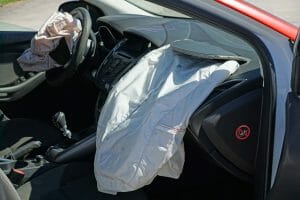
Florida’s minimum coverage requirement is $10,000 in personal injury protection (PIP) and $10,000 in property damage liability (PDL). However, these minimums may not be enough to cover your damages. Factors to consider when choosing your insurance coverage include:
- Your total assets
- The location of your vehicle
- Your ability to pay more
For starters, if you have a large amount of assets you may consider increasing your coverage to protect those assets. Secondly, drivers of vehicles in more urban areas should consider more coverage to account for the number of drivers on the road. Furthermore, if you have the income and ability to pay a higher premium, you may consider increasing your coverage to support unforeseen situations and uninsured drivers.
Types of Florida Car Insurance
Personal Injury Protection (PIP)
The state of Florida is a no-fault insurance state meaning that your insurance will cover your medical costs up to your limit for any personal injury in the event of an accident regardless of who caused it. The minimum amount required by the state of Florida for personal injury auto insurance is $10,000. According to DMV.org, your personal injury protection (PIP) also covers you when you are a pedestrian or bicyclist involved in a car accident; your child and other members of your household; your child when he or she is riding on a school bus; and passengers in your car who do not have their own PIP insurance and do not own a car.
Property Damage Liability (PDL)
Property damage liability insurance coverage (PDL) will cover the costs of any damages you cause to someone else’s property, whether that is a building or another car. The minimum for this in the state of Florida is also $10,000.
Bodily Injury Liability (BIL)
Bodily injury liability insurance (BIL) will cover serious injury or death to others when you cause a crash. Since Florida does not require BIL, not all drivers may carry this type of insurance. If you were in an accident and sustained injuries, specifically a permanent injury, and the driver who caused the accident did not carry BIL, you could still be protected with uninsured or underinsured motorist coverage. However, that insurance would need to be in place prior to the time of the accident.
Uninsured/Underinsured Motorist Coverage (UM)
In Florida it’s also a good idea to carry Uninsured/Underinsured Motorist coverage (UM), which can protect you in the event that that you are not at fault in an accident and the negligent driver does not have BIL or is underinsured for the amount of bodily harm he/she has caused to you. It will also cover you and your passengers in the event of a hit and run accident. The additional advantage of UM is that it provides compensation beyond physical injury. UM insurance covers costs associated with medical expenses, pain and suffering and lost wages.
A car accident can be very costly for all parties involved. It’s important that you maintain a proper amount of coverage, which may be more than the state minimum. If you have been in a car accident, and have suffered injuries to yourself and/or damage to your property, contact an experienced auto accident attorney who may be able to help you recover more for your losses.
References:
Florida DMV Online Guide. (n.d.). Retrieved March 13, 2017, from http://dmvflorida.org/auto-insurance.shtml
Florida Car Insurance – Quotes, Coverage & Requirements. (n.d.). Retrieved March 13, 2017, from http://dmv.org/fl-florida/car-insurance.php
Fick, N. (2016, December). Why minimum car insurance is not enough. Living Safer.
FIRES.Quick Statistics. (n.d.). Retrieved March 15, 2017, from https://firesportal.com/Pages/Public/QuickStats.aspx
Uninsured Motorist Car Insurance Coverage. (n.d.). Retrieved March 17, 2017, from http://dmv.org/insurance/uninsured-motorist-coverage.php